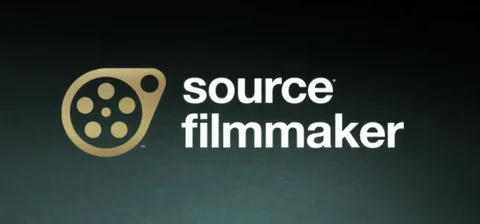SFM compile is a crucial process in Source Filmmaker (SFM), where animations, models, and scenes are finalized into a complete video. Whether you’re a beginner or an experienced animator, understanding SFM rendering, SFM export process, and SFM animation compile will help you create high-quality projects. This guide covers Source Filmmaker build, SFM movie export, and SFM sequence processing to ensure smooth rendering.
What is SFM Compile?
SFM compile refers to the process of converting an SFM project into a finished animation. It involves SFM video rendering, Source Filmmaker render, and SFM scene finalization to ensure that every frame looks polished.
Compiling an SFM project requires adjusting render settings, optimizing scenes, and exporting the final video. The process ensures that lighting, textures, and animations appear smooth and realistic.
How SFM Rendering Works
1. The Role of SFM Rendering in Animation
SFM rendering is the process where frames are processed and finalized. It applies lighting, motion blur, and depth of field effects to make the animation look cinematic.
Rendering can be done in poster, image sequence, or movie mode, depending on the project requirements. Higher-quality rendering takes longer but results in better visuals.
2. Understanding the SFM Export Process
After rendering, SFM export process converts the animation into a usable format. SFM supports various export options, including AVI and MP4.
Export settings like resolution, frame rate, and compression impact the final video quality. Choosing the right settings prevents quality loss during playback.
Steps for SFM Animation Compile
1. Optimize Your Scene for Better Performance
Before compiling, remove unnecessary assets that slow down rendering. Optimizing models and lighting ensures faster processing.
2. Adjust Rendering Settings
In the rendering menu, select appropriate quality settings. Higher resolutions require more processing power, so balance quality with efficiency.
3. Export as an Image Sequence or Movie
For better quality, export as an image sequence and compile it in external software. Direct SFM movie export is faster but may have compression issues.
Best Practices for Source Filmmaker Render
1. Use High-Quality Lighting and Shadows
Proper lighting enhances scene realism. Adjust shadow settings to add depth to your animation.
2. Enable Motion Blur for Smooth Animation
Motion blur reduces sharp transitions, making movement look more natural. Adjust blur settings based on animation speed.
3. Reduce Rendering Time with Efficient Settings
Lowering ambient occlusion or reducing sample rates speeds up rendering without significantly affecting quality.
SFM Project Compilation: Avoiding Common Errors
Many animators face issues during SFM project compilation. Here’s how to fix common problems:
1. Crashes During Rendering
- Close unnecessary programs to free up RAM.
- Reduce texture resolution if the project is too heavy.
2. Exported Video Looks Blurry
- Increase the bitrate in export settings.
- Use lossless formats for better video quality.
3. Lighting Appears Different in Final Render
- Check shadow settings and adjust ambient lighting before compiling.
SFM Sequence Processing and Scene Finalization
1. What is SFM Sequence Processing?
SFM sequence processing organizes animations into a smooth timeline. It ensures transitions, camera movements, and effects align properly.
2. How to Perform SFM Scene Finalization
Finalizing a scene includes adding last-minute adjustments, fixing minor errors, and ensuring all assets are correctly loaded. This step is crucial for a polished final product.
Conclusion
Mastering SFM compile, SFM rendering, and SFM export process ensures high-quality animations in Source Filmmaker. By following best practices, optimizing settings, and troubleshooting common issues, you can create stunning animations efficiently. Whether working on a personal project or a professional animation, understanding SFM project compilation, SFM sequence processing, and SFM scene finalization will help you achieve the best results.
FAQs
1. How long does SFM rendering take?
Rendering time depends on resolution, lighting, and computer specs. Higher quality settings take longer.
2. What is the best export format for SFM videos?
MP4 is widely used, but exporting as an image sequence provides better quality.
3. Why is my SFM video lagging after export?
Lower the resolution or increase the frame rate for smoother playback.
4. Can I render in 4K using Source Filmmaker?
Yes, but it requires a powerful GPU and proper optimization.
5. How can I speed up SFM compile?
Reduce texture quality, limit real-time lighting effects, and close background applications.
By following these SFM compile guidelines, you can produce professional-level animations with ease. Keep practicing and experimenting with different settings to improve your workflow!
